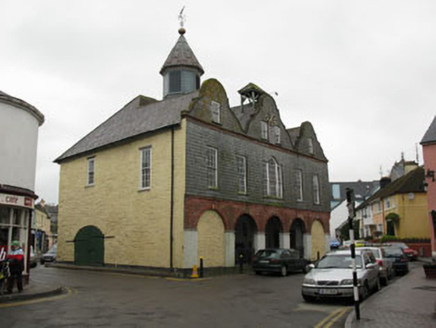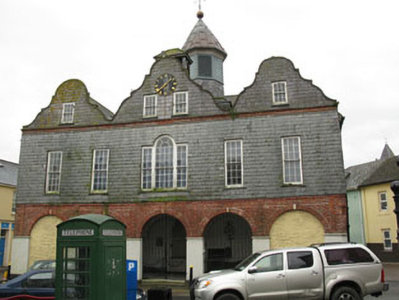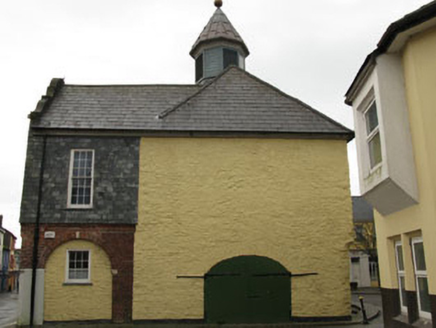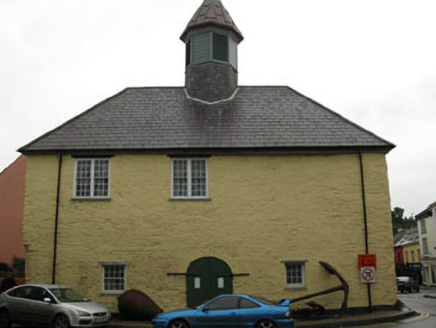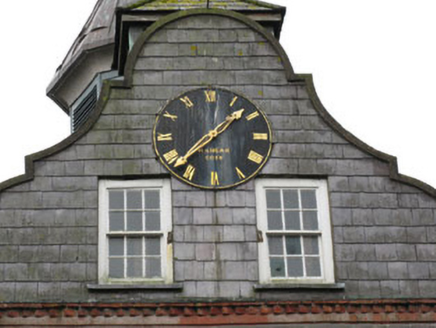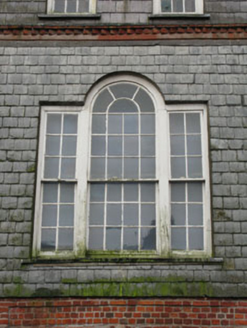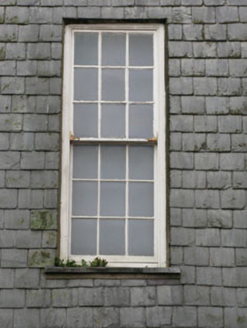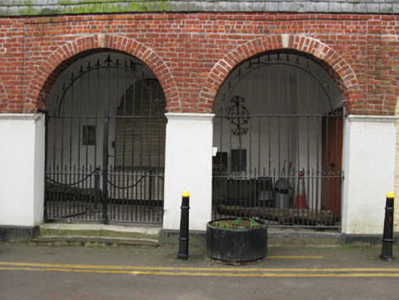Survey Data
Reg No
20851076
Rating
Regional
Categories of Special Interest
Archaeological, Architectural, Historical, Social
Previous Name
Kinsale Courthouse originally Kinsale Market House
Original Use
Market house
Historical Use
Court house
In Use As
Museum/gallery
Date
1600 - 1620
Coordinates
163803, 50496
Date Recorded
02/03/2009
Date Updated
--/--/--
Description
Freestanding triple curvilinear gable-fronted five-bay three-storey former market house, built c.1610, also in use as courthouse from c.1705. Slate hanging and red brick arcaded facade to front (north-east), added c.1705. Now in use as museum. Pitched slate roofs to gabled bays. Hipped slate roof to rear (south-west) block with cast-iron rainwater goods and octagonal cupola having capped roof surmounted by copper weather vane. Slate hanging to first and second floor of facade over red brick dog-tooth stringcourse between first and second floors with clock to central gable. Red brick voussoirs to arcade arches with sandstone keystones and rendered piers. Blind arches to end bays. Painted rubble stone walls to side (north-west, south-east) and rear (south-west) elevations. Square-headed window openings with limestone sills. Six-over-six pane timber sliding sash windows to second floor and nine-over-nine pane timber sliding sash windows to first floor. Round-headed Venetian window to central bay of first floor comprising central twelve-over-twelve pane timber sliding sash surmounted by fanlight, with flanking six-over-six pane timber sliding sash side lights. Round-headed door openings to side and rear elevations having brick voussoirs and replacement double-leaf timber battened doors. Replacement timber staircase to interior south-east corner, square-headed door to interior having replacement timber battened doors. Centrally located in Market Square, fronting directly onto street with small cobbled area to rear.
Appraisal
This high status building occupies a prominent position within Kinsale town centre and is indicative of Kinsale's rise from a trading centre to an important administrative one in the 17th and 18th centuries. It was as a result of this change that the building came to serve as a courthouse which would eventually hold the inquest into the 1915 sinking of the HMS Lusitania. The mixture of materials used in its front facade adds textural variation whilst enlivening the appearance of the building. The structure is enhanced by the retention of features such as the clock and cupola. Once holding both economic and social importance as a combined market and courthouse, the building has been sensitively maintained and now serves as a museum.
